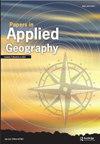Older Adult Population and Neighborhood Walkability by Metropolitan Area Size and Degree of Urban Sprawl
Q2 Social Sciences
引用次数: 3
Abstract
Abstract Despite the various health and social benefits walkable environments are expected to confer, initial studies indicate that older adults in the United States are primarily moving away, rather than toward, urban centers. Yet, amid this broad demographic movement, is there any indication that older adults are more likely to be found in more walkable neighborhoods or that the growth in older adult populations (both percentage change and change in proportion) is positively related to neighborhood walkability? To address these questions, the spatial relationship between older adult population and neighborhood walkability (assessed using Walk Score®) and other amenities was examined for about 37,000 urban census tracts situated within U.S. metropolitan areas with populations of 500,000 or more. The results of the modeling procedure suggest a positive association between the population of older adults in 2015–2019 and neighborhood walkability. Crucially, however, the change in older adults aged 65+ between 2010 and 2015–2019 indicates a trend toward less walkable areas. The relationship between older adults and neighborhood walkability varied among “pre-retirement” (50–64) and “retirement” (65+) age groups and by the size and degree of urban sprawl of the encompassing metropolitan area.大城市规模和城市蔓延程度对老年人口与邻里步行性的影响
尽管步行环境有望带来各种健康和社会效益,但初步研究表明,美国的老年人主要是远离城市中心,而不是向城市中心迁移。然而,在这一广泛的人口运动中,是否有迹象表明老年人更有可能居住在更适合步行的社区中,或者老年人人口的增长(百分比变化和比例变化)与社区的可步行性呈正相关?为了解决这些问题,老年人人口与社区步行能力(使用步行评分®进行评估)和其他设施之间的空间关系被研究了位于美国大都市地区的37,000个城市人口普查区,人口在500,000或更多。建模过程的结果表明,2015-2019年老年人人口与社区可步行性之间存在正相关。然而,至关重要的是,2010年至2015年至2019年期间65岁以上老年人的变化表明了向更不适合步行的地区发展的趋势。老年人与社区步行能力之间的关系在“退休前”(50-64岁)和“退休”(65岁以上)年龄组之间存在差异,并受城市扩张的规模和程度的影响。
本文章由计算机程序翻译,如有差异,请以英文原文为准。
求助全文
约1分钟内获得全文
求助全文

 求助内容:
求助内容: 应助结果提醒方式:
应助结果提醒方式:


